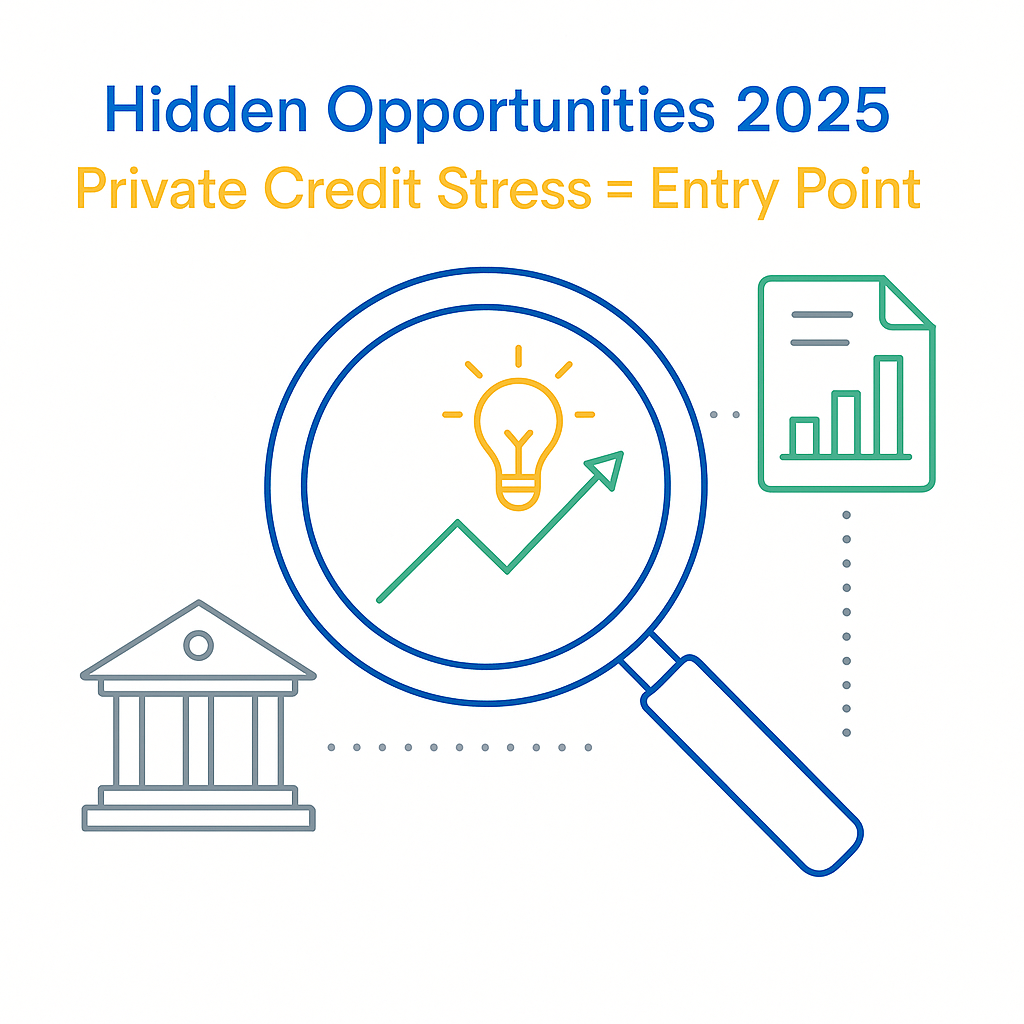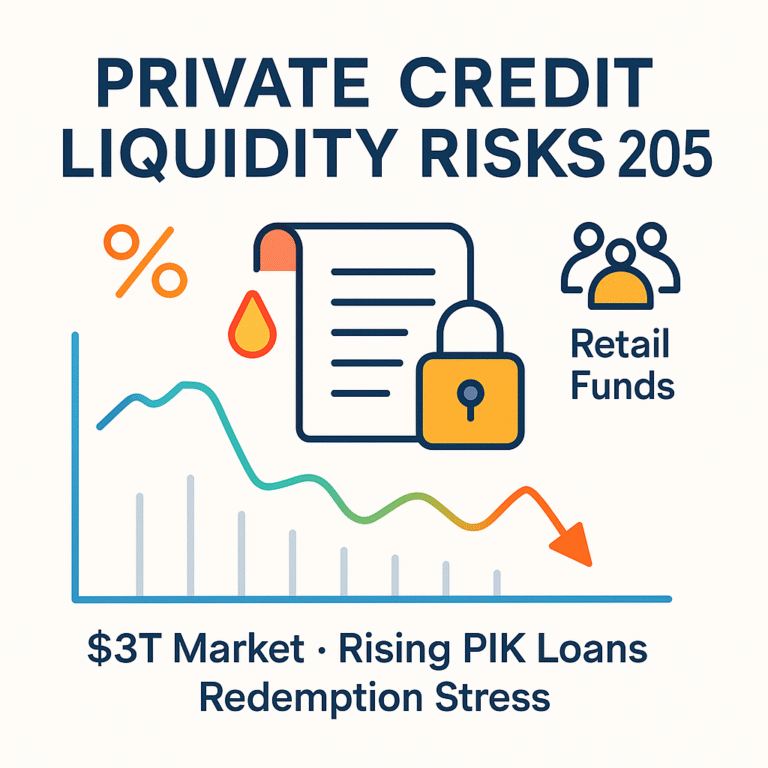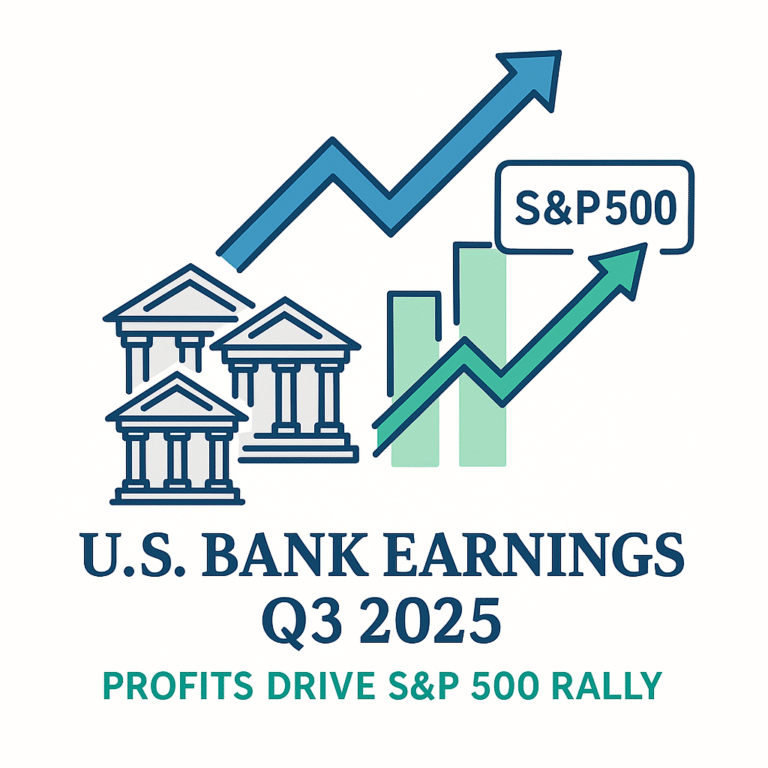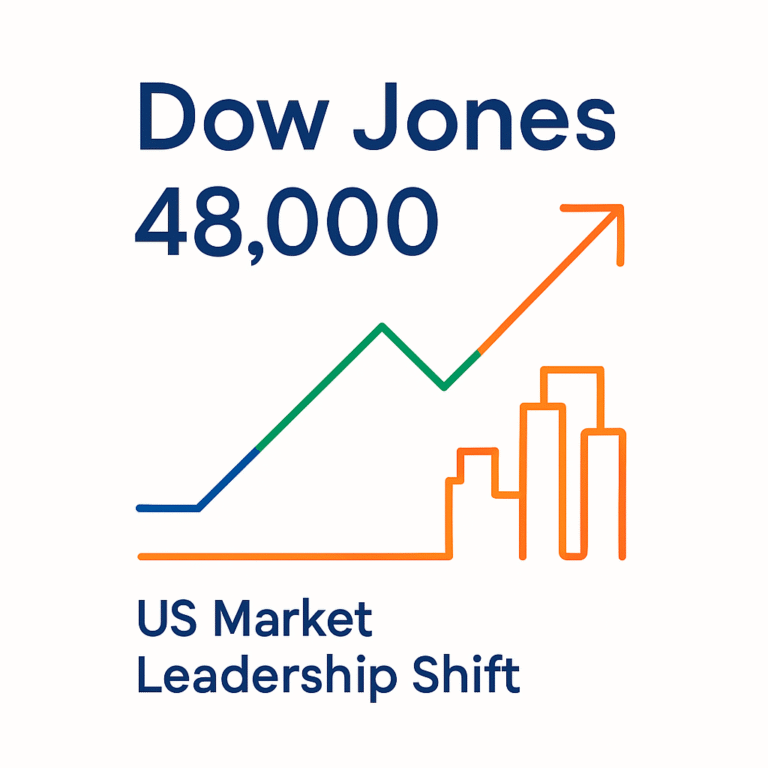Hidden Opportunities 2025: Why Private Credit Stress Could Be Your Entry-Point into the Private Credit Investment Trend
The private credit market is booming—yet signs of stress are emerging. Learn why private credit stress may actually create a new investment entry-point in 2025.
Key Takeaways
✔ The U.S. private credit market has surged—from roughly US$46 billion in 2000 to nearly ~US$1 trillion in 2023—and could exceed US$2.5–3 trillion by the late 2020s.
✔ Non-bank financial institutions (NBFIs) and private-credit funds are now deeply connected with traditional banks, raising financial-stability concerns.
✔ Stress signals—like slower refinancings, widening spreads, and elevated risk for mid-market borrowers—are appearing, but also may mark a window of opportunity.
✔ For individual investors, private credit offers attractive yields but comes with liquidity, transparency and manager-selection risks. Discipline in structure matters.
Why the Private Credit Market Has Become a “Hidden” Investment Sector
Private credit—also called direct lending or non-bank lending—is where non-bank entities (such as private debt funds, business development companies (BDCs) and specialty lenders) provide loans to companies outside the public bond market.
This sector grew rapidly after banking regulation tightened post the global financial crisis, creating a “banking gap” that private credit funds stepped in to fill. Brookfield
In the U.S., the market grew from about US$46 billion in 2000 to roughly US$1 trillion by 2023. Federal Reserve Bank of Boston
Forecasts show potential expansion to US$2.5–3 trillion by the end of the decade. Paul, Weiss
It remains “hidden” because most of its activity is outside public markets—loans are illiquid, disclosure is limited, and many deals happen behind closed doors. Yet its influence is increasing.
For investors seeking the private credit investment trend, this sector is now more accessible—but still requires caution.
Current Stress Signals in the Private Credit Market and What They Mean
Even as private credit investment grows, stress signs are mounting.
For example, in Q1 2025, new-deal spreads widened, especially for mid-market loans, as investors moved from “risk-on” to “wait-and-see” mode. northleafcapital.com
Banks’ exposure to private credit vehicles has grown: as of end-2024, U.S. banks had roughly US$95 billion in committed credit lines and about US$56 billion in drawn exposure to private credit funds and BDCs. Federal reserve
Further, credit-rating agencies note increasing complexity in private credit structures and warn that the market has yet to be fully tested across a full downturn cycle. Fitch Ratings
Below is a summary table of key metrics and issues:
|
Metric / Trend |
Data or Description |
Source |
|---|---|---|
|
Market size growth |
From ~US$46 billion (2000) to ~US$1 trillion (2023) in U.S. private credit | |
|
Forecast size |
Potential >US$2.5–3 trillion by 2028 | |
|
Bank-to-private credit exposure |
~US$56 billion drawn by end-2024 from bank lines to PC vehicles | |
|
Spread adjustment risk |
Spreads in new mid-market loans widened ~50 bps in early 2025 |
These stress signals suggest that the private credit investment trend is entering a more mature, potentially more volatile phase—yet that maturity may create structured opportunities for informed investors.
Expert Views: Why Private Credit Stress Could Translate into Opportunity
Leading institutions are sounding both caution and opportunity in equal measure.
AllianceBernstein states that stress in private credit can sharpen quality and create entry points—for example, when weaker borrowers are re-priced or liquidity becomes scarce.
The European Central Bank warns that non-bank credit growth is increasing systemic risks, yet also notes that improved transparency could stabilize the market.
J.P. Morgan emphasizes that choosing the right manager and investing in loans with strong covenant protections is now more critical than ever.
Putting these views together: the private credit investment trend is less about broad exuberance and more about selective positioning. Stress becomes a filter for quality rather than simply a red flag.
What Private Credit Risk Means for Individual Investors
For individual investors eager to participate in the private credit investment trend, the following are key considerations:
- Liquidity risk: Private loans are often illiquid, with long hold periods and limited secondary markets.
- Borrower-quality risk: Many borrowers are middle-market companies that banks avoid. In a downturn, defaults may rise.
- Manager risk: Performance varies widely—top managers capture much of the excess returns.
- Transparency and regulation: Private credit funds operate with fewer disclosure requirements; regulatory changes could affect the space.
Because of these risks, many advisors recommend accessing the private credit investment trend via indirect vehicles—for example BDCs, closed-end funds or fund-of-funds— rather than direct loans. Limiting exposure (e.g., 5-10% of a portfolio) and ensuring a sufficient “liquidity buffer” are prudent steps.
From Banks to Private Credit Funds: Is There a New Systemic Risk?
One of the most significant developments tied to the private credit investment trend is the shifting role of traditional banks.
Banks have reduced middle-market lending under stricter regulation. Meanwhile, private credit funds have stepped in—but banks remain connected via credit lines and exposure to these funds.
According to the Federal Reserve, this creates a new transmission channel of risk: banks → credit funds → middle-market companies.
In essence, the risk is not just about individual loans going bad—it’s about where stress can build unseen and then spread. That’s why the private credit investment trend is not just about getting returns—it’s about understanding hidden linkages in the financial system.
Next 3 Years: Growth Outlook and Risk Scenarios for the Private Credit Investment Trend
The private credit investment trend has strong tailwinds: high base interest rates, ongoing bank retreat, and investor search for yield. For example, Morgan Stanley forecasts strong yields for private credit in the current environment. Morgan Stanley
But risk scenarios loom large: if economic growth falters, refinancing stress could become acute.
Key upcoming milestones:
- Large number of company loans maturing in 2026-2027.
- Potential regulatory change affecting transparency and fund structure.
- Spread widening and repricing of stressed credits if recession hits.
For investors focused on the private credit investment trend, the window may be open—but timing and structure matter.
How to Participate in the Private Credit Investment Trend Responsibly
If you want to capture this trend, here’s a strategic checklist:
- Focus on structure, not just name: examine loan covenants, collateral, sponsor backing.
- Choose the manager carefully: track record in workouts, quality underwriting, alignment of interests with investors.
- Diversify within the segment: you might invest in asset-based lending, growth capital credit, or specialty finance rather than a single loan type.
- Manage liquidity: given illiquid nature, maintain some cash or short-term bonds to cover surprises.
- Cap exposure: many advisors treat private credit as a satellite allocation; a 5-10% carve-out is typical rather than a full allocation.
By following these disciplined steps you can align with the broader private credit investment trend while moderating downside risk.
The private credit investment trend is entering a phase where stress is showing—not as a signal to avoid the market, but as a cue to evaluate carefully and act selectively.
Strong tailwinds coexist with clear risks. For investors willing to focus on structure, manager quality and risk management, this may be a rare moment to access a growth segment before broader consensus catches up.
If you’re ready to explore private credit as part of your portfolio, now is the time to prepare your approach—because the opportunity lies not in ignoring the stress, but in navigating through it.
References
- “Private Credit Outlook 2025: Growth Potential” – Morgan Stanley Morgan Stanley
- “Could the Growth of Private Credit Pose a Risk to Financial System Stability?” – Federal Reserve Bank of Boston Federal Reserve Bank of Boston
- “Private Credit’s Growing Complexity Untested Through Market Cycles” – Fitch Ratings Fitch Ratings
- “Private Credit Opportunities: The Universe Keeps Expanding” – Brookfield Insights Brookfield
- “2025 Private Credit Outlook: 5 Key Trends” – Wellington Wellington







